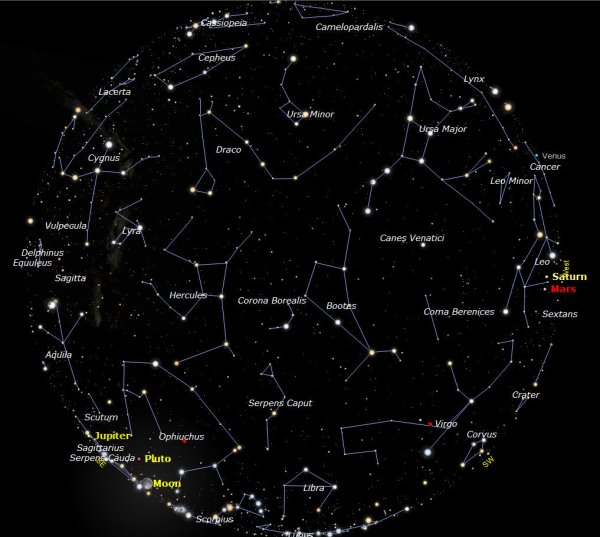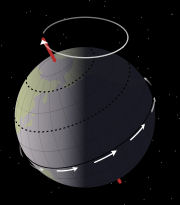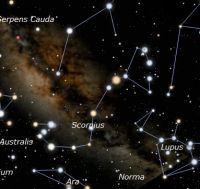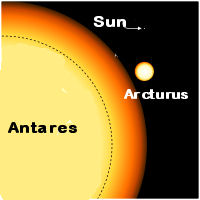
LAKE COUNTY – July’s heat brings out some nasty critters in the night sky – specifically, a dragon and a scorpion.
Let’s start with the dragon, who is named Draco. Our star chart shows Draco to be a faint constellation that wraps itself around the little dipper (Ursa Minor).
In Greek mythology, Draco was a hundred-headed beast who was charged with guarding some golden apples. The superhero Hercules came along, put Draco to sleep with music, and stole the apples. Perhaps that is the origin of the saying “music soothes the savage beast.”

The brightest star in Draco is named Thuban. In 2500 BC, Thuban, not Polaris, was our north star. Why? Because the earth slowly wobbles as it turns – this wobble is called precession. Over time, this causes the position of celestial north to change. A diagram of how precession works is shown below.

From Draco in the north, we now turn to the south to view the glorious constellation, Scorpius the Scorpion.
You can barely see Scorpius on our star chart, but under Lake County skies, this constellation shines brilliantly in the south.

If you own a small telescope, there is a wealth of objects to be viewed in this constellation.
In Greek mythology, Scorpius was the creature that killed Orion, the mighty hunter. Orion rules the winter skies, while Scorpius lives in the summer skies so that the two are never together and so cannot fight one another.
The brightest star in Scorpius is Antares, a huge red supergiant. In last month’s column we showed how small our Sun is compared to the star Arcturus. The following diagram shows how much larger Antares is than Arcturus.

Aside from the dragon and the scorpion, our star chart shows a number of planets inhabit July night skies. Setting in the west are Saturn and Mars. Rising in the east is the solar system’s biggest planet, Jupiter. Pluto is also in the night sky, but you need a very large telescope to see it.
For more information about astronomy and local astronomy-related events, visit the Taylor Observatory website at www.taylorobservatory.org.
On July 26, starting at 8 p.m., the observatory will be open to the public. The topic for the evening is “Gems of the Night,” a presentation about the beautiful objects visible only through a telescope. There will also be a planetarium show and telescope viewing.
John Zimmerman has been an amateur astronomer for 50 years. He is a member of the Taylor Observatory staff, where, among his many duties, he helps create planetarium shows.
{mos_sb_discuss:2}

 How to resolve AdBlock issue?
How to resolve AdBlock issue? 





